Research in Moquegua is a collaborative enterprise. Investigators pursue independent Research questions but share a common goal to understand settlement in Moquegua. Since 1999 the research has followed a standard excavation methodology to facilitate comparisons and statistical analysis.
 Donna Nash, Ph.D.
Donna Nash, Ph.D.University of North Carolina at Greensboro
426 Graham Building, UNCG, PO Box 26170
Greensboro, NC 27402-6170
voice 336.334.5132
fax 336.334.5674
email djnash@uncg.edu
Donna Nash received her Ph.D. from the University of Florida and has been conducting archaeological research in Peru since 1993. She joined the faculty at UNCG in 2010. Dr. Nash examines how leaders in early states established and maintained their power. In particular she studies how buildings were designed for specific activities and recently has focused on palaces and the houses of elite members of society to understand how the lives of the powerful were different from other members of society. Her research looks specifically at the Wari Empire (AD600-1000) and their settlement in the Moquegua region of southern Peru (Osmore River drainage), having excavated at the sites of Cerro Baúl and Cerro Mejía. Investigations in Moquegua have been supported by funding from the National Science Foundation, National Geographic Society, Heinz Foundation, Curtiss T. and Mary G. Brennan Foundation, the Field Museum, the University of Florida, and the University of North Carolina Greensboro.
Dr. Nash has written a number of reports detailing her finds, published book chapters and articles, and presented her research at a number of conferences. To access these works go to the publications page. Click her for a recent copy of her CV.

Sofía Chacaltana-Cortez, Ph.D., is an associate investigator of the Larco Museum in Perú and the Field Museum of Natural History in Chicago as well as an Associate Professor of the Jesuit University Antonio Ruiz de Montoya. She is author of several articles and books related to pre-Hispanic and colonization processes, water governance and hydraulic technologies in the Ancient Andes, and the Great Inka trail. She is also interested in gender dynamics of the pre-Hispanic Andes.
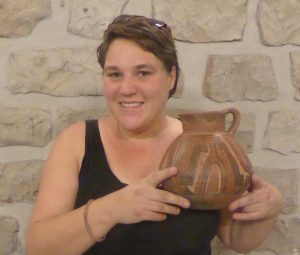
Dr. Emily A. Schach is a bioarchaeologist whose research uses both human remains and archaeological contexts to answer questions about the past. Her current research project in Moquegua uses skeletal and mortuary data to answer questions about ethnic and imperial processes during the Late Intermediate Period and Late Horizon at the Yaracachi site. Dr. Schach completed her PhD at Arizona State University in 2019, where she used bioarchaeological and archaeological data to answer questions about community, gender, and age identities at the Late Intermediate Period site of Chiribaya Alta. She is currently a lecturer at University of California, Santa Cruz and co-director of the Contisuyo field school with Dr. Donna Nash.

Matthew Biwer received his PhD from the University of California, Santa Barbara. His research encompasses human-environment interaction and foodways within the context of political economy, colonialism, and culture contact. Using ancient plant remains, Dr. Biwer focuses on Andean state formation and expansion through changes in diet, spatial patterns of food related activities, farming strategies, agricultural intensification, and the role of food in colonial encounters. He is also interested in the identification, preparation, and use of ancient fermented beverages as they relate to sociopolitical structures. He has participated in the Contisuyo Field and Lab school since 2009.
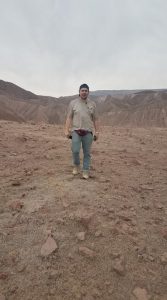
Curran Fitzgerald is a UNCG graduate who has been a member of the Moquegua research team since 2016. Curran’s main research focus is zooarchaeology, the study of animal remains in the archaeological record. He has conducted analyses of faunal remains for several excavations in the Moquegua Valley, including Las Penas, Cerro Capanto, and the Yaracachi salvage project. He served as a unit supervisor during the 2016 excavations of Las Penas and the 2017 excavations at Cerro Mejia. He has been a Teaching Assistant for the Contisuyo Field and Lab school for four seasons. In addition, Curran led a team that investigated and analyzed astronomical alignments of ritual architecture on Cerro Baul and Cerro Mejia. Before coming to the Andes, Curran attended a paleoanthropological field school at Olduvai Gorge, Tanzania, where he conducted research on the physical characterization of lithic raw materials. Curran’s current research interests involve cultural ecology, complementarity, and situating Late Intermediate Period households in regionally constructed ecological and cultural landscapes.
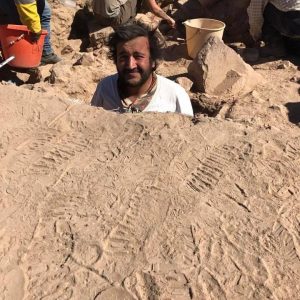
Cyrus Banikazemi received his B.A. from UNCG in 2013, his M.A. from UNCC in 2018, and is currently a Ph.D. student at the University of Illinois at Chicago. Cyrus originally joined the Wari Settlement project in 2012 as a field school student and has worked on a number of projects in the north and south of Peru. Cyrus’s research incorporates geochemical techniques such as portable X-ray Fluorescence (pXRF) and Inductively Coupled Plasma Mass Spectrometry (ICP-MS) in order to chemically profile archaeological materials and determine their place of origin. By showing how certain materials were being circulated both locally and regionally, Cyrus’s research aims to help us better understand the social and economic complexities of the prehistoric Andes.

Emilee Witte graduated from the University of North Carolina at Greensboro in 2018 with a BA in both Anthropology and Archaeology. Emilee attended the Contisuyo Field School in 2017 where she excavated on Cerro Mejía. Since her field school Emilee returned to Peru twice as part of the research team. In 2018, she was a volunteer that excavated on Cerro Baúl. In 2019 Emilee returned as a Teaching Assistant supervising student ceramic analysis while simultaneously continuing her own research. Emilee plans to focus her graduate studies on ceramics and the people who made them. Her current research pertains to the chemical analysis of ceramic pigments using portable X-Ray Fluorescence and trade in the Middle Horizon and Late Intermediate Period. Emilee has presented her findings at the Southern Conference Undergraduate Research Forum in Spartanburg, South Carolina and the SAAs in Albuequerque.
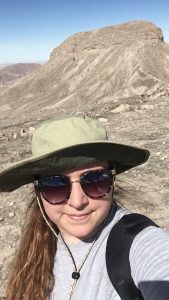
Tabitha Birtell recently earned her B.S. in Biological Sciences and B.A. in Anthropology from the University of Illinois at Chicago as of May 2019. As a Benjamin A. Gilman International Scholarship recipient, Tabitha started out in Moquegua, Peru as a field student where she attended the Contisuyo Archaeological Lab School in the summer of 2018. With interests in biological anthropology and bioarchaeology, Tabitha began developing her research questions with the Yaracachi skeletal remains recovered in a 2010 excavation. Dating to the Late Intermediate (ca. AD 1000-1476) and Late Horizon (ca. AD 1476-1530) periods, this assemblage represents one of the largest collection of burials from southern Peru. Tabitha returned to Moquegua with funding from The Explorers Club in 2019 to conduct research that explores Inka corvée labor and paleopathologies associated with labor induced injuries.

Spencer Wieland is a UNCG student who joined the Moquegua project in the summer of 2019 after receiving an NSF grant to chemically analyze semi-precious stones from Cerro Baul with portable X-Ray Fluorescence (pXRF) technology. The purpose of this project is to identify and potentially source some of the materials used by the Wari to make beads, ornaments, and other jewelry. Spencer will be presenting this research at the 14th Annual Undergraduate Research Expo at UNCG and at the 85th Annual Meeting of the Society for American Archaeology (SAA) in April of 2020.
 Emma H. Thomas
Emma H. ThomasEmma is an undergraduate senior at UNCG majoring in Anthropology, Human Development & Family Studies, and Women’s and Gender Studies. This 2011 field season at Cerro Mejía, Emma participated in her first archaeological field school and was funded by the Archaeological Institute of America’s Jane C. Waldbaum Archaeological Field School Scholarship for first-time field students and the Benjamin A. Gilman International Scholarship for study abroad students. In addition to her work in the field, Emma conducted research with Dr. Nash for her Senior Honors Project on the taphonomy of animal bone at Cerro Mejía. Her research was largely experimental and she is currently conducting the preliminary analysis of the collected data. This undergraduate research was funded by UNCG’s Office of Undergraduate Research for the Summer and Fall 2011 semesters. Emma’s interests include ethnozooarchaeology and modern Peruvian gender roles. To learn more about Emma’s research, check out her Senior Honors Project. Information about how Emma navigated the study abroad experience in Peru is available at Studying Abroad: A Peruvian Experience!
 Edward Zegarra
Edward ZegarraEdward Zegarra is working towards a Ph.D. in Anthropology/Archaeology at SUNY Binghamton in upstate New York and was a Teaching Assistant for Dr. Nash’s 2011 Field School. His research focuses on early state organization, imperial growth, and the development of power relations in mid-late Andean prehistory. He is currently writing a master’s thesis examining the chronology of Wari expansion throughout the southern realm, and has further interests in indigenous archaeology and heritage management.
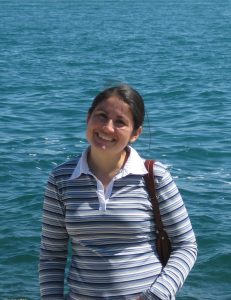
Emily Baca, is a Ph.D. candidate at the University of Illinois at Chicago, as well as an Associate Professor of the Universidad Tecnológica del Perú. After her involvement with the fieldscholl as a TA (2010-12), Emily started her own doctoral research studying domestic households in the Asia Valley, Peru. Her current research deals with examining the differing economic participation that intermediate elite and commoner households of a non-state coastal society engaged with the Inca Empire (A.D. 1400-1532). Her research brings together elemental composition analysis of ceramics and clays, as well as GIS, to understand the Inca provincial economy of coastal Chinchaysuyo.
 David Reid
David ReidDavid A. Reid is a PhD candidate at the University of Illinois at Chicago and has been conducting research in Peru since 2006. After his participation on the Wari Settlement of Moquegua Research Project in 2011, he began his own research on Wari imperialism in the Department of Arequipa. There he has focused on a network of Middle Horizon roads, caravan waystations, and the founding of a Wari colony and temple center in the Majes Valley. His interests bring together remote sensing, GIS spatial analyses, compositional provenance studies, and social network analysis alongside traditional archaeological survey and excavation.